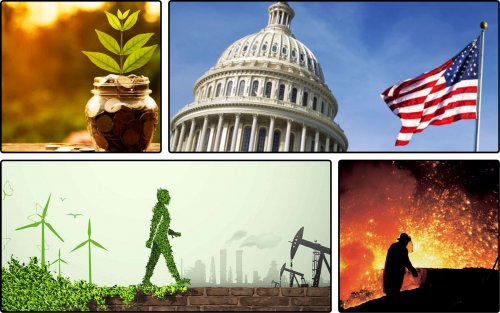The administration of US President Joe Biden and Vice President Kamala Harris announced the allocation of $3.7 billion to start the American industry for removing carbon dioxide from the atmosphere.
The move, part of the bipartisan Infrastructure Act, will launch 4 programs that will stimulate the commercialization of technologies to remove legacy carbon pollution, reports US Department of Energy.
The press service explained that this will help:
- accelerate private sector investments;
- to stimulate progress in monitoring and reporting methods for carbon management technologies;
- provide grants to state and local governments to purchase and use products developed from captured carbon.
The authors emphasized that, in conjunction with efforts to reduce CO2 emissions, the large-scale implementation of carbon management technologies is critical to overcoming the climate crisis and achieving climate neutrality by 2050.
US Energy Secretary Jennifer M. Granholm emphasized that no matter how quickly the country's economy can be decarbonized, it is necessary to fight the old pollution that is already in the atmosphere to avoid the worst consequences of climate change.
"President Biden's Bipartisan Infrastructure Act provides the transformative investments needed to expand the commercial use of technologies that can remove or capture CO2, creating jobs in our regions across the country and providing a healthier environment for all Americans," she said.
The report noted that legacy carbon pollution is already causing significant climate change-related damage in the form of stronger storms, floods and wildfires. President Biden's plan to reduce carbon emissions in all sectors of the US economy.
The Energy Department's analysis suggests that the actions taken through the Inflation Reduction Act IRA and the Bipartisan Infrastructure Act, will reduce greenhouse gas emissions in the economy by 40% from 2005 levels by 2030.
This will help:
- creation of quality jobs;
- equity and environmental justice (40% of the total benefits of certain federal investments will go to vulnerable communities);
- reduction of air pollution;
- protection of communities from increasing total pollution.
4 programs of the Biden-Harris administration:
- $115 million Direct Air Capture Commercial and Pre-Commercial Prize to advance diverse approaches to direct capture of CO2 from air.
- Development of 4 regional centers for direct capture of carbon from the air for $3.5 billion. Each center will be able to capture at least 1 million metric tons of CO2 annually from the atmosphere and permanently store it in a geological formation or convert it into products.
- $100 million in carbon sequestration procurement grants to state and local governments and utilities to support the commercialization of technologies that reduce carbon emissions. As well as purchases of products developed from captured carbon.
- $15 million Bipartisan Infrastructure Law Technology Commercialization Fund for laboratory projects to improve measurement and reporting.
“The Infrastructure Act's bipartisan programs support the goals of DOE's initiatives Tsarbon Negative Shot , which calls for innovations in decarbonization pathways that will capture CO2 from the atmosphere and store it on a gigaton scale for less than $100 per net metric ton of CO2-equivalent,” the statement said.
The press service emphasized that each of the participants of the starting panel for the removal of carbon dioxide agrees:
- build at least one CO2 removal project with a volume of more than 1,000 tons per year by 2025;
- to jointly contribute to a total investment of US$100 million by 2025 to support demonstration projects;
- support efforts to improve reliable measurement, reporting and verification.
Earlier, EcoPolitic wrote, that in the USA, the Senate approved a draft law that provides for over $400 billion investment to fight climate change, reducing inflation and increasing the availability of health care within 10 years.
As EcoPolitic previously reported, US President Joe Biden announced the allocation of $2.3 billion to help create infrastructure capable of withstand extreme weather conditions and natural disasters.





